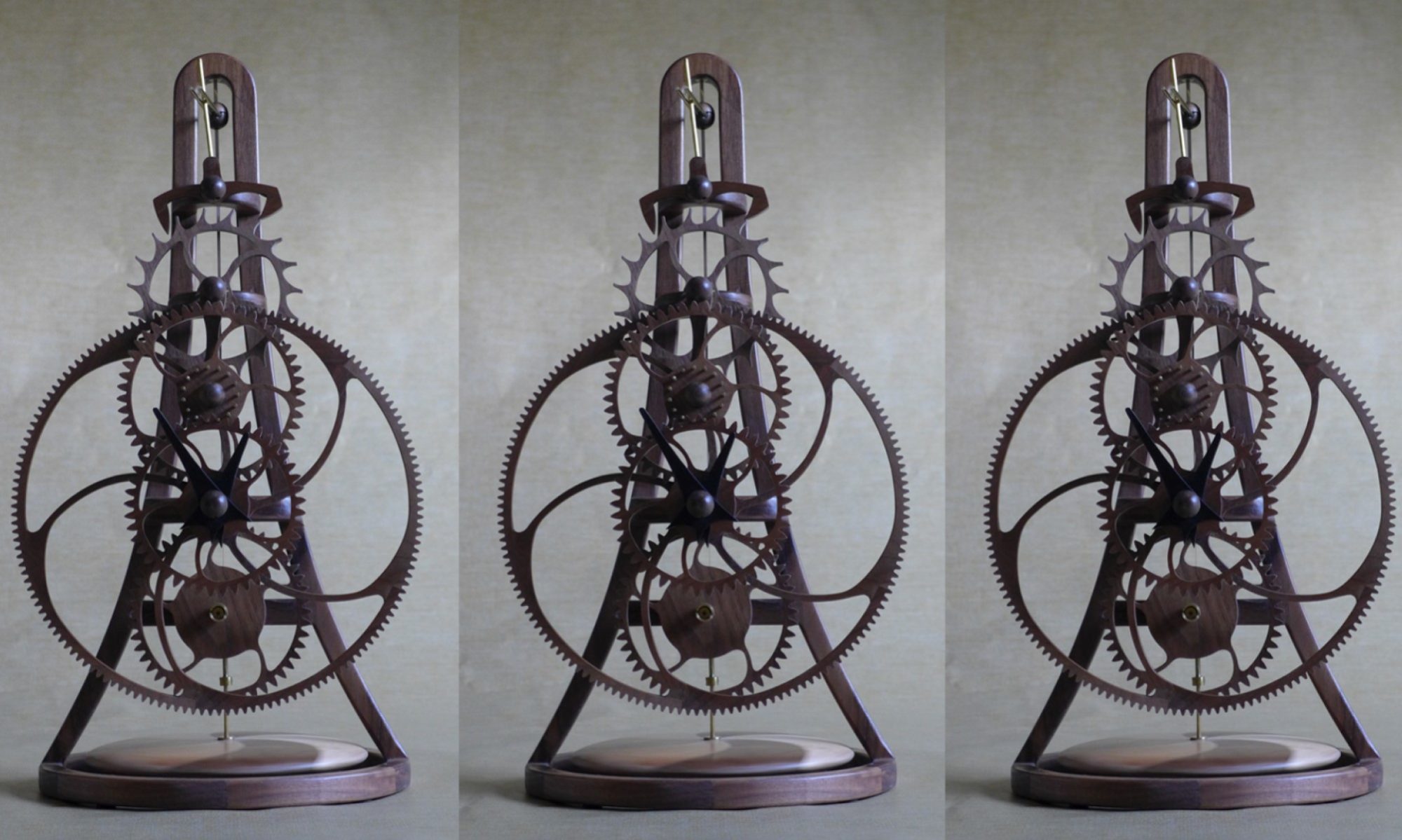This morning I made some temporary clock hands so that I can tell how long the clock runs before stopping and whether the clock is running fast or slow. I then followed my standard practice for debugging the clock. Run the clock until it stops, looks at the teeth engaged when it stops, sand any imperfections and mark the teeth with a piece of tape, re-start the clock and repeat the process.

If the clock continues to run past the teeth that I have marked I remove the tape marker. Hopefully, over a few hours the number of teeth marked keeps reducing until none are marked and the clock keeps running. Unfortunately, by lunchtime the clock kept stopping, there were no obvious issues with the teeth, and I realized that there was another problem.
I started tweaking some of the other parameters that I knew could be the cause of poor running. I changed the weight on the remontoire arm, no joy. Then, I changed the fore/aft location of the intersection of the pallet stem and the torsional spring form. As I reduced the effective length of torsional spring fork the clock began running better. I judge this by the “strength” of the tick-tock sound.

Pallet stem position at the start of the day

I kept adjusting this length until I had a strong “tick-tock” and the clock was running well. I then went back to the process I use correct problem teeth. By mid-afternoon I had removed all the tape marking problem teeth and at the time of this post the clock has run for 4 hours and is still going.
During this process, I have been changing the weights on the torsional pendulum to adjust the clock speed. The clock is now keeping great time for this stage in its development.


If the clock continues to run, I have two tasks for tomorrow – Cut the actual clock hands and construct the clock speed adjustment mechanism.

